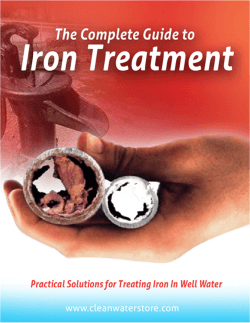
Document 143902
Intravenous (IV) Iron Infusions This leaflet answers some common questions about IV iron infusion. Please talk to your doctor about why IV Iron has been recommended in your particular case. What is an IV iron infusion? Intravenous or ‘IV’ means giving something directly into the blood stream of the body through a vein. A needle placed into a vein is attached to a drip that contains iron mixed with saline (a sterile salt water solution). This fluid is slowly ‘dripped’ (infused) into the vein and mixes with the blood in your body. Why is iron important? Iron is essential for the body to make haemoglobin (Hb), a pigment that makes red blood cells red. When the amount of iron in the body gets too low, the haemoglobin level falls below normal. This is known as ‘iron deficiency anaemia’. Haemoglobin is very important as it carries oxygen from the lungs to the rest of the body. If your haemoglobin or iron levels are low this may make you feel tired and not able to carry out your normal routine. Why might I need IV iron? The most common way to treat iron deficiency anaemia is to take iron by mouth as a tablet or liquid. This approach works well for most people and is usually tried first. IV iron might be needed if you are: • • • • Unable to tolerate iron taken by mouth Unable to absorb iron through the gut Unable to absorb enough iron due to the amount of blood that the body is losing In need of a rapid increase in iron levels to avoid complications or a blood transfusion Risks and benefits of IV iron Your doctor will explain the risks, benefits and available alternatives to IV iron in your particular case. The most significant risk of IV iron is a small chance of having an allergic reaction which, in rare cases, can be life threatening. IV iron is prescribed for iron deficiency anaemia when oral iron is not tolerated, effective or likely to work quickly enough and the benefits of IV iron outweigh the risks in your particular case. Before you have IV iron: Tell your doctor if you: • Are pregnant or trying to get pregnant • • • • Have a history of asthma, eczema or other allergies Have had a reaction to any type of iron injection or infusion in the past Have a history of high iron levels, haemachromatosis or liver problems Are on any medications (including over the counter or herbal supplements) How much iron is needed? The amount of iron needed by your body to make enough new red blood cells to return Hb levels to normal and to have some stored in reserve for the future is calculated. When all of the iron needed by the body is given in a single infusion (1 treatment) this is called a ‘total dose’ infusion. (Continues) Sometimes this is needed but in other cases just giving smaller amount of IV iron can help increase Hb levels enough to improve symptoms and help avoid a blood transfusion. The rest of the iron can then be given back to the body slowly over the coming months with iron tablets. Side effects of IV iron Patients receiving iron infusions can experience side effects including: • • • • • • • • Temporary changes in taste (e.g. metallic) Headache, feeling sick or vomiting Muscle and joint pain Shortness of breath Itchiness, rash Changes to blood pressure or pulse Burning and swelling at injection site Severe side effects are rare; you will be closely monitored for any signs of these side effects by nursing staff Day of the iron infusion • • • • • Have your breakfast/lunch. You do not need to fast for an iron infusion. Take all of your regular medications. You can drive home after the infusion (unless there is an unexpected reaction) and resume usual activities. The doctor/nurse will put a small IV drip in your arm/hand through which iron is given. If you experience any side effects, inform staff immediately/ ring your bell. After the iron infusion Sometimes side effects can start one to two days after the infusion and include headache, mild fever, joint and muscle aches. These generally settle down by themselves over the next few days. They are more common with ‘total dose’ infusions of iron polymaltose. If you are worried or side effects are interfering with your daily activities contact your doctor for advice. If you have chest pain, difficulty breathing, dizziness or neck/mouth swelling SEEK URGENT MEDICAL ATTENTION / CALL AN AMBULANCE (000). Iron tablets should be stopped for a week after an iron infusion because the iron in them will not be absorbed by the body. If you are having more than one iron infusion then stop the iron tablets during the course of treatment as well. They are often not needed after IV iron infusions (especially after a ‘total dose’): Check with your doctor if and when iron tablets are needed. The Iron Infusion Clinic is open Tuesday and Thursday only Contact details: (08) 9340 2222 Appointment date: Time: 7.45am until 12pm to 1pm (lunch will be provided but you may want to bring a snack for morning tea) Location: Present to the Emergency Centre at the front hospital entrance on Bagot Road Blood test date(s): Content used with kind permission from BloodSafe, Government of South Australia Approved for use by WNHS Infusion Unit & WNHS Hospital Transfusion Committee © April 2011 WNHS 0580 Rev 1 Revised July 2012
© Copyright 2025














